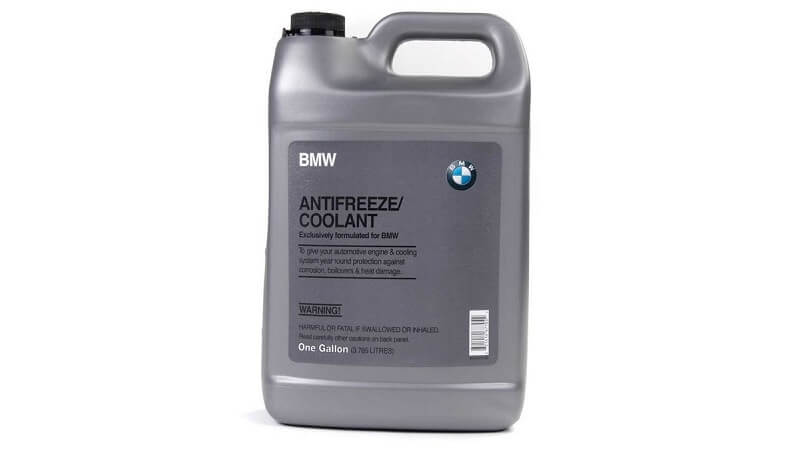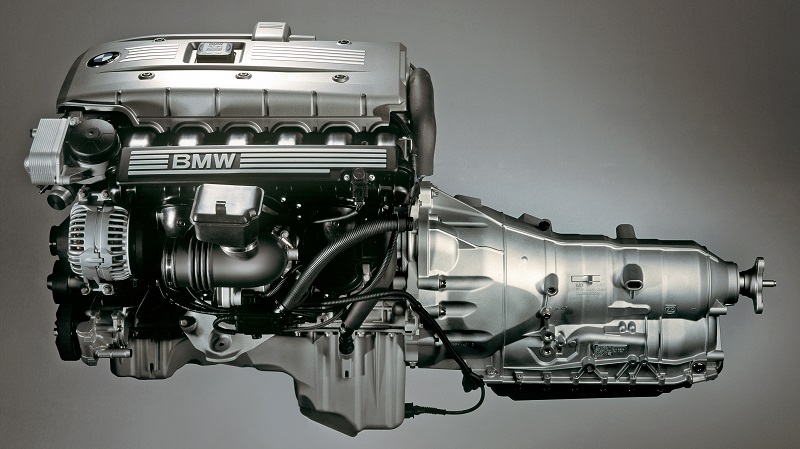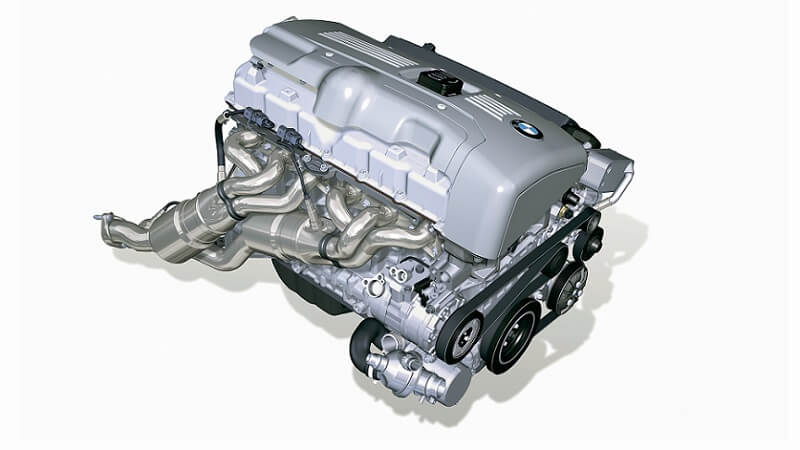BMW has a long history of designing and manufacturing inline-six engines. The straight-six is, undeniably, the German manufacturer’s most refined engine configuration. After decades of producing naturally aspirated examples, BMW introduced the N54 in 2006. It was the company’s first mass-produced turbocharged engine and set the foundation for the excellent BMW engines we experience today.
The N55 was introduced shortly after the N54. It brought about several changes, most of them improving the engine’s reliability. Since its introduction, the N55 became a staple in BMW’s lineup and powered multiple models over the next decade.
In 2015, the BMW B58 was revealed. It was the latest iteration of the forced-induction inline-six engine from the Bavarian giants and was part of BMW’s new modular engine family — alongside the BMW B38 and BMW B48.
Here’s all you need to know about the BMW B58, perhaps one of the best BMW engines ever made.

Technology Behind The BMW B58 Engine
BMW made some significant updates to ensure that the BMW B58 was a step above its predecessor, the BMW N55. Unlike the N55, the B58 features a closed-deck engine design. It also offers 20% more boost pressure and an increased compression ratio of 11.0:1. The B58 is a marginally larger engine — displacing 2,998cc compared to the N55’s 2,979cc — and weighs 18 lbs more, but while making notably more power.
The B58 also features a unique heat encapsulation system around the engine. As its name suggests, the system traps engine heat, reducing the drastic cooling of the engine components once it’s turned off. This way, the internals are less prone to damage from multiple heat cycles.
Other features, like a single twin-scroll turbo, double VANOS (variable valve timing), and Valvetronic (variable valve lift), have been carried over from the N55.
Available Versions
There are only three versions of the BMW B58 engine — B58B30M0, B58B30M1, and B58B30O1. However, these engine versions were available in different states of tune depending on which car they were used on, making for multiple iterations. There’s also a fourth ‘B58B30C’ engine version, but this is essentially the B58B30M1, which was rebadged on the Toyota Supra.
If you check the engine number plate on your car, it should read B58B30A if you have a B58B30M0, B58B30B if it’s a B58B30O1, and B58B30C if the engine is the B58B30M1.
BMW B58 vs. B58TU1
The B58B30M0 is the original B58 engine, and it was in production until 2019. Before it was phased out, BMW introduced the B58TU (Technical Update) engines, including the B58B30M1 and B58B30O1. The former is considered the ‘mid-output’ iteration of the engine, while the latter is the ‘high output’ version.
While the B58B30M1 shared most of its hardware and design with the original B58B30M0, the B58B30M1 brought significant changes. This included a revised fuel system, a redesigned cylinder head with an integrated exhaust manifold, an updated timing chain, and a new crankcase design.
B58B30M0
As we mentioned, the B58B30M0 is the original B58 engine. It was available in four different tunes, depending on the cars it was powering. Peak power ranged between 322 hp at 5,500–6,500 rpm and 355 hp at 5,500–6,500 rpm, while peak torque was either 332 lb-ft
at 1,380–5,000 rpm or 369 lb-ft at 1,520–4,800 rpm.
B58B30M1
The B58B30M1 produces maximum output figures of 335 hp at 5,000–6,500 rpm and 369 lb-ft of torque at 1,600–4,500 rpm.
Production of this engine began in 2018.
B58B30C
The B58B30C is essentially the terminology for the B58B30M1 used on the Toyota Supra. While the two make identical peak output figures, the B58B30C uses a different turbo setup.
B58B30O1
Barring the high-performance M Division tuned S58, this B58B30O1 is the most powerful spec of the BMW B58. Peak numbers are a solid 382 hp at 5,000–6,500 rpm and 369 lb-ft of torque at 1,600–4,500 rpm.
BMW S58 — A Performance Tuned BMW B58

The S58 engine is the high-performance version of the BMW B58 engine. It made its debut on the F97 X3 M and F98 X4 M.
Compared to the standard B58, the S58 features a host of changes allowing it to churn out more power and torque throughout the rev range. The S58 features two mono-scroll turbos in place of the single twin-scroll unit on the B58. The turbochargers feature an electronically controlled wastegate and air-to-water intercooler. A secondary electric pump also ensures that the turbos cool down once the engine is switched off.
It also employs a forged crankshaft crafted from a high durability chrome-molybdenum heat-treated steel. BMW also equipped the S58 with high-performance connecting rods and a special crankshaft that connects to forged MAHLE pistons. MAHLE Motorsport is a name that specializes in forged racing pistons and rings, and the ones on the S58 receive the same treatment that the company is renowned for.
The S58 is available in two tunes. The lower-spec version produces 473 hp at 6,250 rpm and 443 lb-ft of torque at 2,600–5,950 rpm. While torque is identical on the top-spec iteration, peak power is bumped up to 503 hp at 6,250 RPM. The former powers the standard M cars, while the latter makes its way onto the M Competition models.
The BMW S58 is the most powerful production inline-six engine BMW has produced yet.
Which Cars Contain The BMW B58 Engine?
The B58 thrives at the heart of several modern-day BMWs, from the F30 3-Series to the G07 X7. It’s also the engine that Toyota chose to revive the iconic Supra with.
B58B30M0
As we mentioned above, this engine was available in 4 different engine configurations. With 322 hp and 332 lb-ft of torque, the first powered the G11/G12 740i/Li and F32/F33/F36 440i from 2016 to 2019, and the F30/F31/F34 340i from 2015 to 2019.
A version of the engine that produced 335 hp and 369 lb-ft of torque was at the heart of the F20/F21 M140i (2016–2019), F22/F23 M240i (2016–2020), G30/G31 540i (2017–2019), and the G32 640i (2017–2019).
The third state of tune produced an identical 335hp but less torque at 332 lb-ft. This engine powered just two models — the G01 X3 M40i from 2017 to 2019 and the G02 X4 M40i from 2018 to 2019.
The most powerful iteration of this engine version produced 335 hp and 369 lb-ft of torque. BMW used this engine version on the 3-Series and 4-Series models equipped with the M Performance Power Kit. These models included the F30/F31/F34 340i (2016-2019), F32/F33/F36 440i (2016-2019), and the G30/G31 540i (2017-2019).
B58B30M1
The B58B30M1 was one of the two B58 engines following its technical update in 2018. It powers several BMW models such as the BMW G06 X6 xDrive40i and others. Most of these are still on sale:
- 2018-present G05 X5 xDrive40i / sDrive40i
- 2018-present G07 X7 xDrive40i
- 2020 G30/G31 540i
- 2020–present G32 640i
- 2020-present G06 X6 xDrive40i
- 2020-present G11/G12 740i
- 2019-2020 G14/G15/G16 840i
B58B30O1
This is the most powerful iteration of the standard BMW B58 engine. Here’s the list of cars it powers:
- 2018-present G29 Z4 M40i (in countries not subject to EU emissions standards)
- 2019-present G20 M340i
- 2019-present G21 M340i
- 2020-present G01 X3 M40i
- 2019-present G02 X4 M40i
- 2020–present G22 M440i
- 2021 Toyota Supra (in countries not subject to EU emissions standards)
- 2021-present G42 M240i
S58B30T0
The S58 is available in two different versions. The lower-spec engine that produces 473hp and 443 lb-ft of torque powers the standard F97 X3 M, F98 X4 M, G80 M3, and the G82 M4.
The higher-performance version produces just as much torque but more power with 503hp. This engine can be found in the F97 X3 M Competition, F98 X4 M Competition, G80 M3 Competition, and the G82 M4 Competition.
Is the BMW B58 Engine Reliable?

The BMW B58 is a remarkable engine and, over its short lifespan so far, has proved to be one of the most reliable pieces of engineering from the German manufacturer. It’s still a relatively young engine, and most examples you’ll find in the market are less than a few years old, so the engine’s long-term reliability is still unknown.
That said, in the time it has been around, it’s been almost flawless. There are some minor issues that owners have reported, but most of them are just characteristic of the modern-day BMW engines. Here’s what you should look out for if you’re going to own a BMW B58 engine:
Coolant Loss
The BMW B58 employs two coolant reservoirs. One of them stores coolant for the radiator, while the second, smaller tank holds coolant for the engine’s air-to-water intercooler. While not a very common issue, there have been some reports that coolant levels in the primary reservoir have dropped quickly and unexpectedly.
Surprisingly, there hasn’t been a definite reason for the sudden coolant loss in most cases. Typically, this would result from a failed gasket or a leak in the coolant transfer pipe. However, B58 owners have reported that their coolant levels have dropped even when these components seem completely fine.
If you find yourself in this situation, check if the coolant cap has been sealed correctly and that there are no leaks. The BMW B58 uses a pressurized cooling system, and the lid allows pressure release to regulate internal pressure. It may be possible that a small amount of coolant is lost every time this happens. This is referred to as ‘natural loss’ in most forums, and it shouldn’t be a significant amount.
It’s also worth inspecting whether other underlying issues may be causing your engine to overheat and use up more coolant.
Oil Filter Damage
One of the more commonly reported issues with owning a B58 engine is related to the oil filter. The bottom of the oil filter tends to disintegrate, and there are reports that this debris gets stuck to the housing when the oil filter is removed. In most cases, you’ll be able to get the stuck oil filter bits out using a pair of pliers, but it may require an oil filter housing change if it’s properly lodged in there.
It’s not something that will immediately cause damage to your engine, but if the bits of the oil filter enter the engine, it can wear out the internals.
VANOS Solenoids Problem
The BMW B58 features the manufacturer’s double VANOS, or variable valve timing system, actuated by solenoids. While there haven’t been many reports of this happening on the B58 in particular, the solenoids have been known to fail in the past, so it’s worth checking.
Unfortunately, it gets a little more complex in the case of the B58 as BMW decided to move the timing chain and the VANOS solenoids to the rear of the engine. Thus, accessing it can be more time-consuming and technically challenging than a front-mounted timing chain layout.
A problem with the VANOS solenoids will likely cause a drop in power and fuel efficiency, erratic idling, and VANOS-related DTC codes if you connect the car to an OBD-II reader.
The solenoids are a fairly inexpensive component. However, the labor cost, especially with these rear-mounted timing chains, will do some damage to your budget. On a well-maintained engine, the solenoids should last over 100,000 miles.
Valve Cover Gasket Failure
Modern-day BMW engines come with a plastic valve cover and a rubber valve cover gasket. Both these components are exposed to extreme temperatures from the engine’s regular running, which causes them to deteriorate and crack. The valve cover gasket, in particular, tends to harden from the repeated heat cycles, cracks, and fails.
This can result in an oil leak. Usually, this is not a problem you will face until the engine has run over 70,000 to 80,000 miles. Thanks to the B58’s heat encapsulation system, the heat cycles don’t have as drastic of an effect on the valve cover gasket, and you may just end up getting a longer lifespan from them.
Maintaining a BMW B58 Engine
Despite proving to be a rather reliable inline-6, the BMW B58’s durability still depends on proper maintenance. Using quality parts and servicing the engine on time is key if you want your B58 to give you a carefree driving experience.
Here at Bimmers.com, we offer a wide range of genuine BMW, OEM, and quality aftermarket parts for any Bimmer. To find parts that match your vehicle, simply head over to our shop section, select your car from the drop-down menu, and search for the part you need. The results will only include parts that are a guaranteed match for your vehicle!





